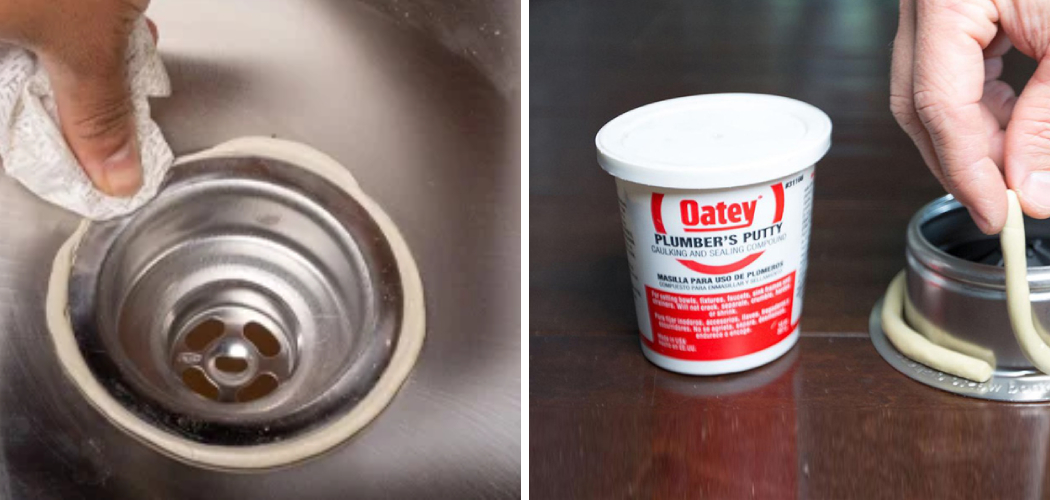Determining whether plumber’s putty is still usable or has gone bad is crucial for ensuring effective plumbing repairs and installations.
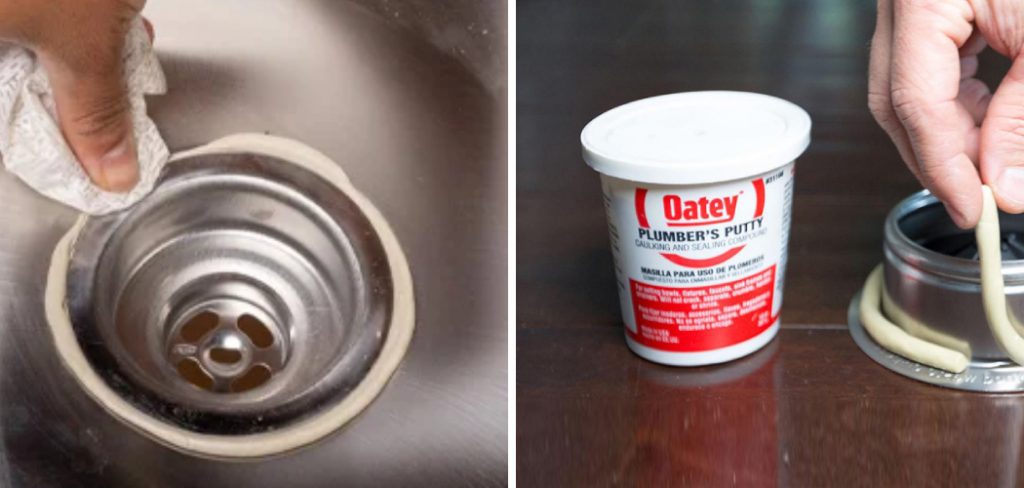
Over time, plumber’s putty can degrade, becoming dry, brittle, or discolored, which can compromise its sealing properties.
In this article, we’ll explore several indicators to help you with how to tell if plumbers putty is bad. From changes in texture and odor to visible signs of mold or mildew, understanding these warning signs will enable you to make informed decisions when working with plumber’s putty.
By learning how to tell if plumber’s putty is bad, you’ll be better equipped to maintain the integrity of your plumbing fixtures and prevent potential leaks or water damage in your home.
Importance of Properly Assessing Plumber’s Putty
Properly assessing the condition of plumber’s putty is essential for ensuring the longevity and reliability of your plumbing repairs. Plumber’s putty serves as a flexible sealant that helps prevent water leaks around faucets, sinks, and drains.
When the putty is in good condition, it creates a watertight seal that stops water from seeping into areas where it can cause damage. However, if the putty is compromised—due to factors like drying out, becoming brittle, or harboring mold—it loses its effectiveness. Using degraded putty can lead to leaks, water damage, and potentially costly repairs.
Therefore, taking the time to assess the putty before each use is a simple yet crucial step in maintaining the integrity of your plumbing systems. By ensuring that the putty is in optimal condition, you not only extend the lifespan of your fixtures but also save yourself from future headaches and expenses.
Plumber’s Putty and Its Uses in Plumbing Applications
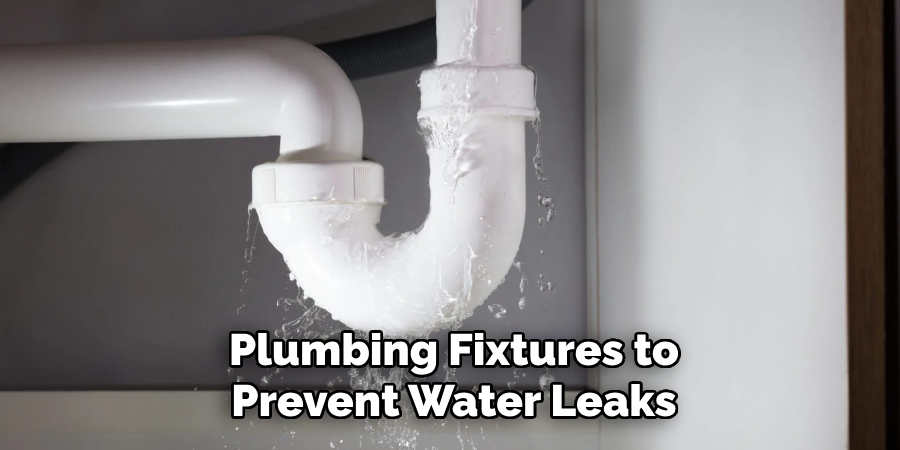
Plumber’s putty is a versatile and essential tool in the plumber’s toolkit, known for its malleability and effectiveness in creating watertight seals. Its primary use is to seal areas around faucets, drains, and other plumbing fixtures to prevent water leaks.
Plumber’s putty is particularly popular for its ease of use, as it can be molded and shaped to fit almost any type of joint or gap, ensuring a tight seal every time. Unlike other sealants, it remains soft and pliable over time, which allows for minor adjustments and doesn’t harden, making it easy to remove if needed.
Additionally, plumber’s putty is often used in conjunction with other materials, such as gaskets and washers, to enhance the overall sealing capability. In essence, plumber’s putty is an indispensable material in various plumbing applications, renowned for its simplicity and efficacy in maintaining the integrity of plumbing systems.
Understanding Plumber’s Putty
Understanding plumber’s putty is essential for anyone involved in plumbing repairs, from seasoned professionals to DIY enthusiasts. Plumber’s putty is a pliable, clay-like substance that has been used for decades in the plumbing industry due to its reliability and ease of application.
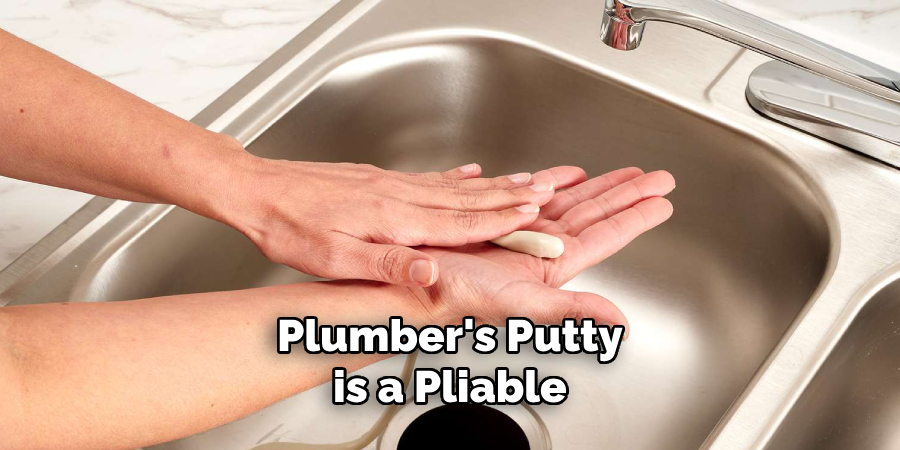
The putty is primarily composed of linseed oil and other compounds that give it its distinctive texture and properties. When applied correctly, plumber’s putty forms a watertight seal, preventing leaks and protecting your plumbing installations from water damage.
One of the key benefits of plumber’s putty is its versatility. It’s used in a wide range of applications, including sealing sinks, faucets, drains, and other plumbing fixtures. Unlike silicone-based sealants, plumber’s putty does not harden; this characteristic makes it ideal for areas that may require future adjustments or disassembly.
However, it’s worth noting that plumber’s putty is not suitable for all situations—it’s not recommended for use on porous surfaces like marble or granite, as the oil in the putty can stain these materials.
In summary, having a thorough understanding of plumber’s putty—its composition, applications, and limitations—equips you to make informed decisions in your plumbing projects. By choosing the right type of sealant and using it properly, you can ensure long-lasting and effective plumbing repairs.
Composition and Properties of Plumber’s Putty
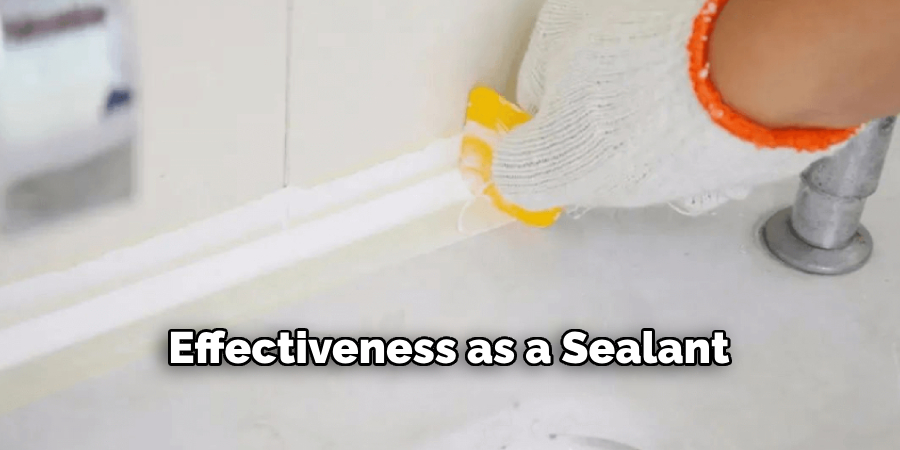
Plumber’s putty is composed of several key ingredients that contribute to its unique properties and effectiveness as a sealant. The primary component is typically linseed oil, which gives plumber’s putty its pliability and long-lasting flexibility.
This oil-based nature ensures that the putty remains soft and moldable for extended periods, which is essential for creating reliable seals around plumbing fixtures. In addition to linseed oil, the putty often contains powdered clay and other fillers that enhance its texture and adhesive qualities.
One of the notable properties of plumber’s putty is its ability to stay malleable over time. Unlike silicone-based sealants, which can harden and become brittle, plumber’s putty retains its flexibility.
This makes it particularly useful for applications where movement or slight adjustments are necessary, as the putty can adapt to changing conditions without losing its sealing capability. Moreover, it is relatively easy to remove and reapply, offering an added layer of convenience during repairs or installations.
Another important property of plumber’s putty is its resistance to water. Once applied, plumber’s putty effectively creates a watertight seal that prevents leaks and protects surfaces from moisture damage. However, it is not suitable for all types of surfaces. For instance, the oil in the putty can cause stains on porous materials like granite or marble, making it less ideal for these applications.
Overall, the composition and properties of plumber’s putty make it an invaluable tool in the plumbing industry. Its durability, flexibility, and ease of use ensure that it remains a preferred choice for creating seals around sinks, faucets, and other plumbing fixtures. Understanding these attributes allows for more informed and effective use of plumber’s putty in various plumbing projects.
Common Applications in Plumbing Projects
Plumber’s putty is a staple in many plumbing projects due to its versatility and reliable sealing properties. One of its most common applications is in the installation of sinks. When setting a sink drain, plumber’s putty is used to seal the area between the sink drain flange and the sink basin itself.
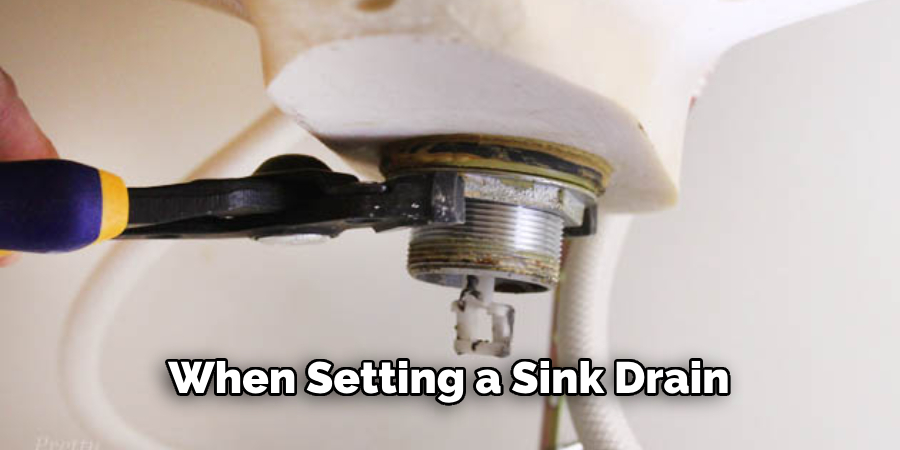
This prevents any water from leaking through the sink, ensuring the plumbing system operates efficiently without water damage to surrounding areas.
Another frequent use of plumber’s putty is in securing faucets. When mounting a faucet to a sink or countertop, putty is applied to the base of the faucet. This helps create a watertight seal that prevents leaks where the faucet connects to the plumbing fixtures. Given its flexibility, the putty can accommodate the slight movements that faucets may experience over time without compromising the seal.
Additionally, plumber’s putty is often used in conjunction with strainer baskets in kitchen sinks. Plumber’s apply the putty around the strainer basket before placing it into the sink drain opening. This method ensures a snug fit and an effective seal to stop water from seeping through and causing potential damage to cabinetry or flooring beneath.
Lastly, plumber’s putty can be used to seal pop-up drains, which are common in bathroom sinks and tubs. By applying the putty around the lip of the pop-up drain assembly, it secures a tight seal that prevents water from leaking out even when the drain is closed.
In summary, the various applications of plumber’s putty in plumbing projects highlight its fundamental role in maintaining watertight seals, thereby protecting against leaks and promoting the longevity of plumbing installations. Whether it’s for sinks, faucets, strainer baskets, or pop-up drains, plumber’s putty proves to be an essential material for any plumbing toolkit.
Lifespan and Shelf Life of Plumber’s Putty
Plumber’s putty is praised for its durability and longevity in various plumbing applications. Once applied, plumber’s putty can maintain its integrity for many years, as its oil-based composition allows it to stay pliable and effective over time.
This longevity makes it a reliable choice for sealing areas that may not be easily accessible for frequent maintenance.
However, the shelf life of plumber’s putty, before it is applied, can vary depending on storage conditions and the product formulation. Generally, an unopened container of plumber’s putty can last for several years if stored in a cool, dry place.
It is essential to keep the container sealed to prevent the putty from drying out or becoming contaminated. Once the container is opened, the putty may start to harden if not adequately sealed after each use, although it remains usable for an extended period if stored properly.
Signs of Bad Plumber’s Putty
Identifying bad plumber’s putty is crucial to ensuring the integrity of plumbing installations and preventing potential water damage. There are several signs that indicate the putty might be past its prime or unsuitable for use:
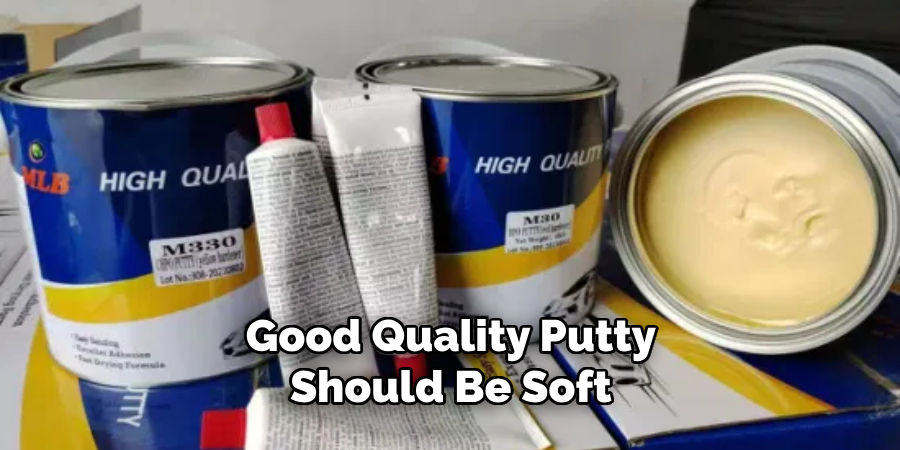
- Cracks and Hardening: One of the most apparent signs of bad plumber’s putty is the presence of cracks or if the putty has hardened. Good quality putty should be soft and malleable, allowing it to form an effective seal. If it crumbles or feels stiff, it may no longer provide a reliable seal and should be replaced.
- Discolouration: Over time, plumber’s putty can change in colour, usually darkening or developing splotches. While slight discolouration might not immediately render it ineffective, significant changes can suggest that the putty has degraded and may not perform well.
- Loss of Pliability: Fresh plumber’s putty is known for its flexibility, making it easy to mold around fixtures. If the putty resists bending or feels overly thick, it may have lost its pliability and selecting a newer batch is advisable.
- Separation of Components: In some cases, especially with oil-based putties, you might notice the separation of oil from the putty itself. This can lead to an uneven consistency, making it difficult to achieve a uniform application and compromising the seal.
- Unpleasant Odor: While plumber’s putty generally has a neutral or mildly earthly smell, a rancid or unusually strong odor can indicate that the putty has gone bad. This is often due to the breakdown of ingredients over time.
- Inadequate Sealing Performance: If you notice persistent leaks or if the putty fails to create a watertight seal during application, it may be an indication that the putty is no longer effective. Even if the putty appears to be in good condition, its performance in practical use is the ultimate test of its quality.
Regularly checking your stock of plumber’s putty and being vigilant about these signs can save time, money, and prevent water damage. Always have a fresh, pliable batch of putty on hand to ensure the effectiveness and longevity of your plumbing repairs and installations.
10 Methods How to Tell if Plumbers Putty Is Bad
1. Check for Changes in Texture
One of the most obvious signs that plumber’s putty is bad is a noticeable change in its texture. Fresh plumber’s putty should have a smooth and pliable consistency, making it easy to mold and shape. If the putty feels dry, crumbly, or hard to the touch, it may be past its prime and no longer suitable for use.
2. Inspect for Cracks or Flakes
Examine the surface of the plumber’s putty for any cracks, flakes, or signs of crumbling. These visual cues indicate that the putty has deteriorated and may not provide a reliable seal. Cracked or flaky putty is more prone to leaking and may not adhere properly to the surfaces it’s intended to seal.
3. Check for Discoloration
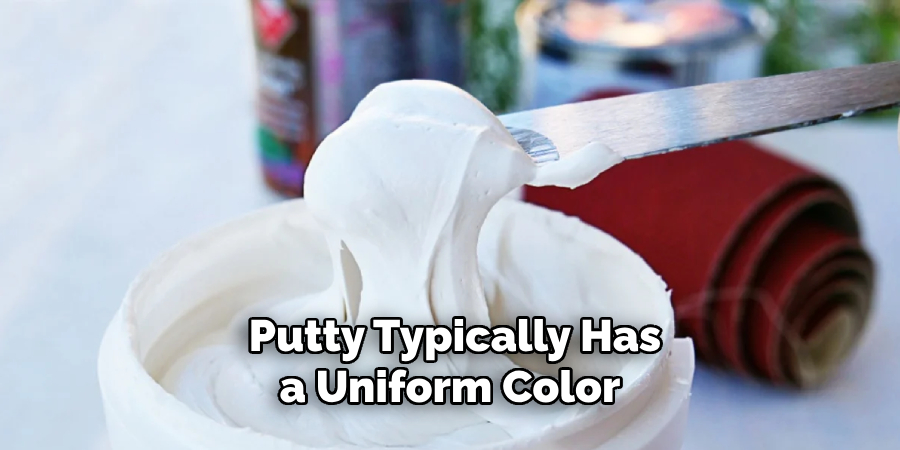
Fresh plumber’s putty typically has a uniform color, usually white or off-white, depending on the brand. If you notice any discoloration, such as yellowing, darkening, or the presence of black spots, it could indicate mold or mildew growth. Discolored putty should be discarded and replaced, as it may harbor harmful bacteria and compromise the integrity of the seal.
4. Smell for Off Odors
Take a whiff of the plumber’s putty to check for any unusual or off-putting odors. Fresh putty should have a mild and neutral scent, similar to clay or dough. If you detect any foul or sour odors, it could be a sign of bacterial growth or decomposition, indicating that the putty has gone bad and should not be used.
5. Test the Consistency
To assess the consistency of plumber’s putty, take a small amount between your fingers and gently knead it. Fresh putty should feel soft, malleable, and easy to shape. If the putty feels excessively hard, stiff, or crumbly, it may have dried out and lost its effectiveness. Avoid using putty that has an inconsistent or lumpy texture, as it may not provide a proper seal.
6. Press Test
Perform a simple press test to evaluate the elasticity of the plumber’s putty. Take a small amount of putty and press it firmly between your fingers. Fresh putty should deform slightly under pressure but bounce back to its original shape when released. If the putty remains flattened or fails to rebound, it may be too dry and brittle to form a proper seal.
7. Check Expiration Date
Many plumber’s putty products come with expiration dates printed on the packaging. Check the expiration date to determine if the putty is still within its usable lifespan. Even if the putty appears to be in good condition, using expired products can lead to unpredictable results and may compromise the integrity of the seal.
8. Assess Environmental Factors
Consider the conditions in which the plumber’s putty has been stored to assess its viability. Exposure to extreme temperatures, moisture, or sunlight can accelerate the degradation of putty and cause it to go bad more quickly. If the putty has been stored in unfavorable conditions, it may be more prone to drying out, discoloration, or mold growth.

9. Perform a Water Test
To test the effectiveness of plumber’s putty, apply a small amount to a non-porous surface, such as glass or plastic, and create a seal. Fill a container with water and submerge the sealed surface, ensuring that the putty is fully submerged. Observe the sealed area for any signs of water leakage or seepage. If water begins to leak through the seal, it indicates that the putty is not forming a proper barrier and may need to be replaced.
10. Consult Manufacturer Guidelines
When in doubt, refer to the manufacturer’s guidelines and recommendations for using plumber’s putty. Manufacturers often provide information on how to store, handle, and determine the quality of their products. If you’re unsure whether the putty is still usable, contact the manufacturer for guidance and clarification.
Conclusion
In conclusion, ensuring the quality and effectiveness of plumber’s putty is crucial for maintaining reliable seals in plumbing applications.
By regularly checking for changes in texture, cracks, discoloration, odors, consistency, and elasticity, you can identify when the putty has gone bad and needs to be replaced. Additionally, being aware of the putty’s expiration date and environmental storage conditions will help prolong its usability.
Always perform a water test to verify the integrity of the seal before finalizing any plumbing job. Adhering to the manufacturer’s guidelines will provide further assurance of achieving optimal results. Thanks for reading, and we hope this has given you some inspiration on how to tell if plumbers putty is bad!
